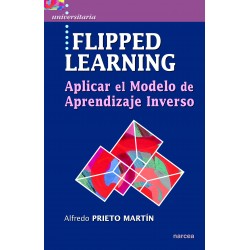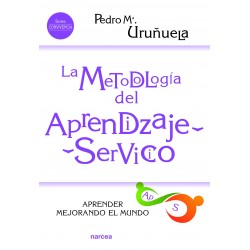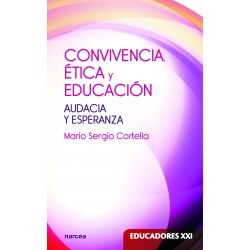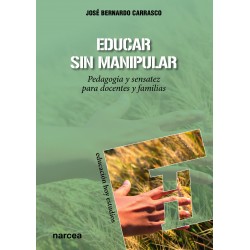Herramientas de accesibilidad
El Plan de Convivencia del Centro Educativo
Pautas para su elaboración
¿Cómo puede un centro educativo actualizar su Plan de Convivencia? ¿Qué pasos son necesarios y en qué puntos debe fijarse? ¿Cómo puede trasladar los nuevos planteamientos al Documento de Organización de la Convivencia del propio centro?
Tras un breve repaso a lo que es el Plan de Convivencia, su necesidad y objetivos fundamentales, el libro plantea un análisis del trabajo que está llevando a cabo el centro de cara a la convivencia. Y lo hace en torno a cuatro grandes temas.
En primer lugar, la situación general, comprobando el grado de acuerdo sobre lo que se entiende por convivencia, el enfoque reactivo o proactivo de la misma y su presencia en los documentos institucionales, y en el día a día del centro. Se
analizan, en segundo lugar, las situaciones de quiebra de la convivencia que se están dando en el centro, desde el maltrato entre iguales hasta la violencia institucional, pasando por las conductas disruptivas y la violencia de género. En tercer lugar, se plantean cuatro actuaciones y trabajos imprescindibles para la convivencia, como son la gestión pacífica de conflictos, el protagonismo del alumnado y las familias, las normas y medidas correctoras, y el desarrollo de la inteligencia interpersonal o competencias necesarias para una convivencia positiva. Por último, se analizan los aspectos organizativos del Plan: las estructuras de apoyo, los tiempos y horarios, la elaboración del Plan y la formación del profesorado para todo ello.
Cierra la obra un último capítulo dedicado a la elaboración y concreción del Documento de Organización de la Convivencia del centro, que es el resumen y concreción de todo lo tratado en el libro.
Todos los capítulos cuentan con propuestas concretas de trabajo para poder analizar el desarrollo de cada apartado, valorar las alternativas y concretar las acciones que se recogerán en el Plan de Convivencia y en el Documento de Organización del Centro.
- ISBN
- 9788427727113
- Páginas
- 240
- Edición
- 1ª edición
- Fecha de edición
- 2020
- Alto
- 21,50 cm
- Ancho
- 15,00 cm
• Avanzando hacia los Planes de Convivencia. Razones para trabajar la convivencia.
• Una rúbrica para la evaluación: “El cuidado de la convivencia”
I. TRABAJANDO LA CONVIVENCIA
• Llegar a una definición compartida de convivencia
• El enfoque básico de la convivencia: ¿es reactivo o proactivo?
• ¿Aparece la convivencia en la vida del centro y en los documentos institucionales?
II. SITUACIONES DE QUIEBRA DE LA CONVIVENCIA
• Conductas de acoso, de ciberacoso y conductas disruptivas
• La violencia de género y otros tipos de violencia
III. PROGRAMAS Y ACCIONES A FAVOR DE LA CONVIVENCIA
• La gestión y transformación pacífica de los conflictos
• Protagonismo del alumnado y de las familias
• Normas, sanciones y competencias para la convivencia
IV. ELEMENTOS ORGANIZATIVOS DEL PLAN DE CONVIVENCIA
• Estructuras de apoyo a los programas y acciones
• La elaboración del Plan de Convivencia
• Formación del profesorado para la convivencia
• El Documento de Convivencia del centro educativo
How can an educational centre update its Plan for Coexistence? What are the necessary steps to achieve it and where should it to be implemented? How can it be transferred to the Document of Coexistence of the Centre itself?
After a brief overview of the Plan for Coexistence and its meaning, significance and main purposes, the book poses an analysis of the work on harmonious relations the center is conducting. It does so with regard to four different issues.
First of all, the general situation, verifying to what extent there is a shared definition of coexistence, its reactive or proactive approach, and its presence in the institutional documents and in the daily life of the centre.
Secondly, an analysis of disruptions of coexistence at the Centre, such as bullying among peers, disruptive behaviors, gender-based violence and institutional violence.
Thirdly, the book poses four actions and tasks which are imperative for social harmony: healthy conflict management, the prominence of students and their families, rules and corrective measures, and the development of interpersonal intelligence and skills required for a positive coexistence.
Finally, an analysis of the organizational aspects of the Plan: support structures, times and schedules, preparation of the Plan and teacher training in this regard.
The last chapter of the book deals with the formulation and specification of the organization of the Centre’s Document for Coexistence, which is the summary of all the subjects the book has addressed. There are specific working proposals for examining the development of each section, evaluating the alternatives and defining the actions that will be reflected in the Plan for Coexistence and the Centre’s Document of Organization .
EXTRACT OF THE INDEX
- Towards a Plan for coexistence. Reasons to work on coexistence.
- Set of standards for evaluation: “Looking after coexistence”
I. WORKING ON COEXISTENCE
- Reaching a shared definition of coexistence
- The basic approach to coexistence: a reactive or a proactive approach?
- Is coexistence present in the life of the center and its institutional documents?
II. INTERRUPTION OF COEXISTENCE
- Bullying, cyber-bullying and disruptive behaviors
- Gender-based violence and other types of violence
III. PROGRAMS AND ACTIONS IN FAVOR OF COEXISTENCE
- Healthy conflict management and resolution
- Prominence of the students and their families
- Rules, corrective measures and skills for coexistence
IV. ORGANIZATIONAL ELEMENTS OF THE PLAN FOR COEXISTENCE
- Support structures, programs and actions
- Preparation of the Coexistence Plan
- Teacher training on coexistence
- The Educational Centre’s Coexistence Document
PEDRO Mª URUÑUELA NÁJERA has worked as Secondary School teacher, High School teacher, school inspector, associate professor at the UNED (National Distance Teaching University) and Deputy Director of the High Inspectorate at the Education Ministry. He is an expert on coexistence. He is the founder of the Group CONVIVES. He has written several books and articles on these subjects. He is a renowned and qualified teacher trainer.
Pedro Mª Uruñuela
Pedro Mª Uruñuela es un experto indiscutible, con larga experiencia, en la elaboración de propuestas creativas y alternativas sobre temas de convivencia. Su colaboración con el equipo de la Asociación Convives, su participación activa en los movimientos de renovación pedagógica y su aportación-asesoramiento a los centros educativos que le han requerido para orientar los procesos de mejora de la convivencia, le avalan a la hora de presentar públicamente su trabajo en este libro.










